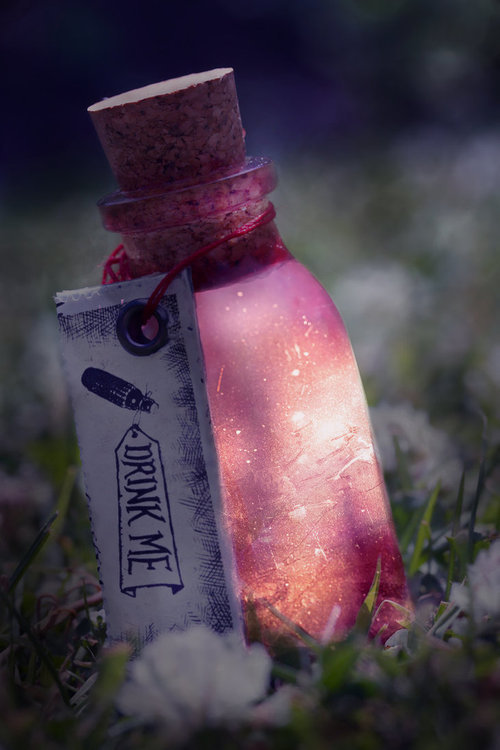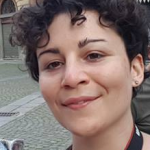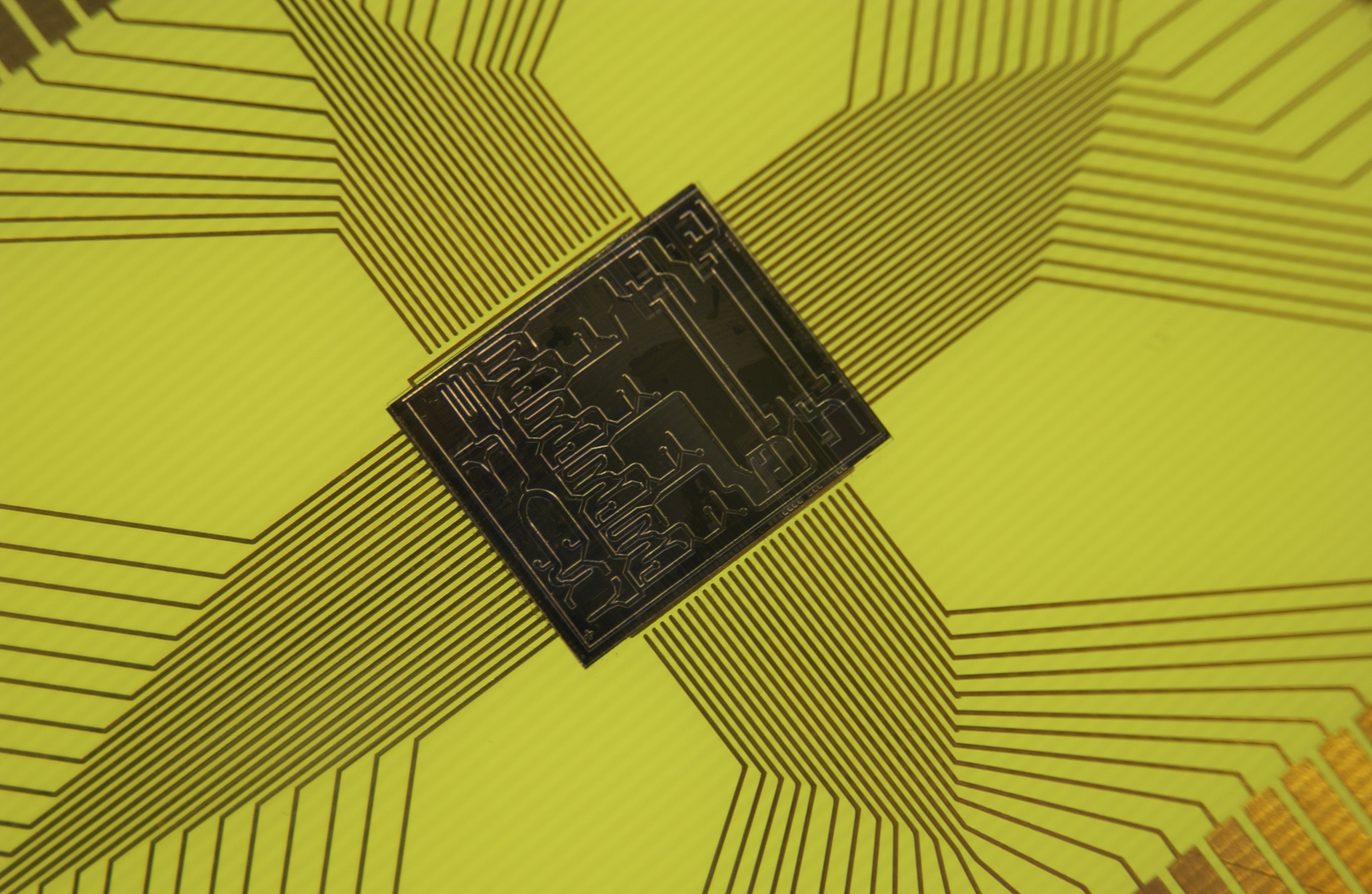In the last episode, Alice and the biologists wandered between the sparks of the electrophysiology domain. There, techniques and devices such as the patch-clamp and the MEAs allow for the cells to talk with digital systems through a code of electric signals.

During their explorations, without even noticing, Alice and her friends cross the blurred boundary between that sparkling realm and some foreign land, unknown yet….
The first thing they bump into is a little sign with incredibly tiny letters on it. Alice tries to read but her eyes cannot distinguish shapes. Beyond that sign, which hangs from a little stick emerging from the grass, a large area seems to be covered with the map of a big city, with intricate roads and different neighborhoods. She can barely distinguish single buildings resembling postcards of different colours and shapes. Alice is puzzled, and of course she wants to find out more. After some discussions with her friends from Bio-Land, it emerges that nobody actually knows what this place is. And nobody is small enough for reading the sign. What to do?
Suddenly, something moves between the blades of grass around the explorers. At a first sight, it seems like a big shiny bug. But when Alice bends down for checking, it turns out it is a small bottle filled up with a strange liquid. The bottle has no legs: some very tiny beings are carrying it, putting a lot of effort in it by the way. The seem to have just the right dimensions for living beyond that minuscule sign, and to read it properly. To Alice, they are moving (and panting) little dots under the bottle. She also hears some very high-pitched sounds coming from the troupe, but she cannot understand a word. With further effort, the little beings roll their carriage, exposing a label to Alice’s sight. There, capital letters the size of a neighborhood from the city in front of her form the suggestion:

“DRINK ME”
Alice seems to hesitate, experiencing a sort of Déjà Vu. High-pitched toned voices intensify. Finally the group of explorers decide to take a sip a head.
Few seconds later, they wake up from a sleep they don’t remember to have fallen into. They find themselves between a forest of incredibly large narrowed leaves stemming from the soil, seemingly scratching clouds in the sky.
“Welcome to this land of chips!” says a solemn voice. “Follow me please…”.
The voice come from a very tall person with a long white lab coat, who starts walking fast between the vegetation. They follow the guide, and arrive at a gate with a large sign hanging from a massive wooden stake almost the height of the tallest plants there or even more. The sign is so large it can be read anyways:
“WELCOME TO “ON-A-CHIP” LABS”.
While reading, Alice and the other explorers are given some badges.
“Let’s start the tour” says the guide, that now is wearing lab glasses covering half of his face.
Of course they follow. Besides being curious, they are slightly intimidated by the fact he has composite eyes.
They are navigating the intricate map of roads and crossings thy observed from above. And things appear now way more interesting. There aren’t any buildings: all postcards seen from the distance are huge platforms where mysterious liquids and materials move following roads and crossings carved on the surface. They travel and mix with each others following the design of the card, and each card is different and evokes different interactions between them. Actually, each of the cards has a unique shape, and makes a different map of canals and structures.
“You will not believe this…”
Alice and the others are almost scared by the guides starting talking again.
“In this laboratory….we make….”
everybody stares at at least two or three eyes behind the glasses while suspense builds up…
“….laboratories!”.
Everybody drops their jaw. The guide goes on:
“Here at the research laboratories of “on-a-chip” enterprises we build up labs…on-a-chip. That means they implement a process that would be normally carried out in a normal-sized lab, but without the need of operators, in a highly automated way, interfacing with digital devices for control and data collection, and interestingly….at the microscale”.

“So…. this is like a micro-Bio-Land inside Bio-Land….” whispers Alice, in wonder.
“Yeah, sort of…I prefer to think of this as a meta-laboratory though” answers the tall insect in a lab coat, trying to conceal proudness.
“But let’s talk technicalities!” with this, the group steps on a sliding scale carrying them across that large forge.
“Our visit will take place between what we call micro-electro-mechanical systems, or MEMs. They generally range in size from 20 micrometers to a millimeter, while their functional sub-components measure between 1 and 100 micrometers. Lab-on-a-chip devices are a particular class of MEMs, and implement at the microscale functionalities or processes normally carried out by human operators in laboratories where devices range in size from millimeters to meters. That is possible thanks to this huge machine you can see on the right: the photolithographer. It uses light for patterning suitable wafers so that micro-devices take shape: we are talking pressure sensors, airbag sensors and other mechanically movable structures, or fluid handling devices such as capillary connections, mixers, valves, pumps and dosing devices.
You could ask..why are we based in Bio-Land? Because big boost in MEMs research came when relative technologies turned out to provide interesting tooling for genomics applications, like capillary electrophoresis and DNA microarrays. That happened in the mid-90s. Applications fields range from chemical analysis, environmental monitoring, medical diagnostics to cellomics, but we are strong on the synthetic chemistry as well, considering rapid screening and microreactors for pharmaceutics.
Labs-on-a-chips have many advantages, especially if you are human-sized: you use lesser amounts of reactants, shorter diffusion distances provide for faster response time of the system, which in turn takes to stricter control on the process. The system is more compact: all functionalities are integrated in an efficient manner in a very small volume. Compactness allows for massive parallelization….”
“…this goes so much high-throughput……”
suddenly exclaims one of the reduced-size-but-still-human biologists.
“You get me!” Answers in a rush the insect guide. And then he continues…
“…and lower fabrication costs, mass production, automatically verified quality, enhanced safety. So….why not to do this all the time? Well actually I have to highlight some drawbacks…”
Meanwhile, they traveled across all forms of Lab-on-a-chip, each one making liquids flow, meet and mix in different fashions, collecting different data in tiny electronic chips associated with them.
“A lot of research needs to be done still…especially on the technological side. But the peculiar criticality in this case concern the fact that on the small scale physical and chemical effects—like capillary forces, surface roughness, chemical interactions of construction materials on reaction processes—become more dominant. This can make processes more complex than in the human-sized labs. Also, detection principles may not always scale down in a positive way, leading to low signal-to-noise ratios.”

Alice never thought she would have met an insect speaking technicalities so fluently. The sliding scale gently drops them on a platform surrounded by gigantic grass blades.
“But you cannot leave before seeing a functioning lab-on-a-chip, guys. Follow me again!”
The guide goes down small stairs taking underground. There, the lights are low, and a single chip has liquids flowing across itself in channels, mixing and activating all sorts of micro-devices. They seem to glow in vivid colors. Other insects in lab coats operate some circuits connected to the chip, seemingly operating it and collecting some data.
“This is our latest creation….”
Alice and the biologists notice that all reactants are collected in a unique channel on one end of the chip, after flowing parallely through respective capillaries and undergoing different modifications by different micro-devices. In the end, the final product is collected in a gigantic container made of glass, of which they can see only the opening. But they understand on one side of that huge bottle some other insect painters are writing “DRINK ME”, each letter having the size of a little skyscraper. The insect-biologist smiles with each one of its eyes, and silently guides them to the exit of the area.
“Just for curiosity….how much does it cost, one of these?” Asks Alice pointing at the manufactured laboratories in the distance.
“Like I said, we are still researching a lot, and mass production will happen, but in the future…I’m not selling cheap”.
 Roberta Bardini
Roberta Bardini
